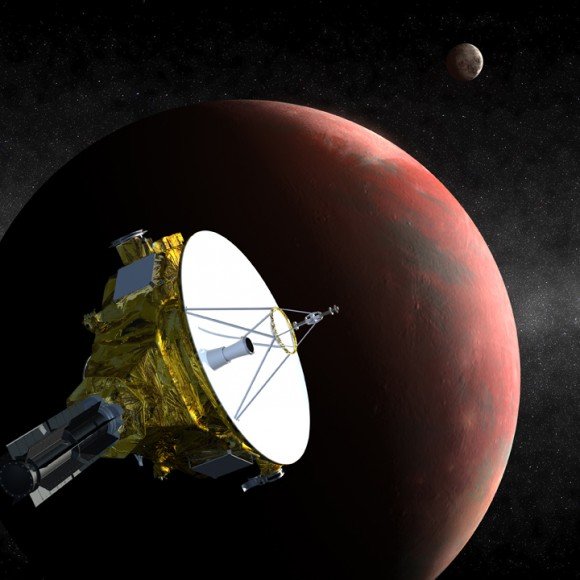In recent years, it has become surprisingly apparent that, contrary to previous belief, Earth is not the only place in the solar system with liquid water. Jupiter’s moon Europa, and possibly others, are now thought to have a deep ocean below the icy crust and even subsurface lakes within the crust itself, between the ocean below and the surface. Saturn’s moon Titan may also have a subsurface ocean of ammonia-enriched water in addition to its surface lakes and seas of liquid methane. Then of course there is another Saturnian moon, Enceladus, which seems to not only have liquid water below its surface, but huge geysers of water vapour and ice particles erupting from long fissures at its south pole, which have been sampled directly by the Cassini spacecraft. Even some asteroids may have liquid water layers beneath their surfaces. There is also still a chance that Mars might have subsurface aquifers.
 But now there is another contender which at first thought might seem to be the most unlikely place to find water – Pluto.
But now there is another contender which at first thought might seem to be the most unlikely place to find water – Pluto.
Inhabiting the bitterly cold, lonely outer reaches of the solar system, this dwarf planet would hardly seem to be a good place to look for liquid water, but new research is indicating that, like the other moons already mentioned, it may yet surprise us. It is now being suggested that a subsurface ocean is not only possible, but likely.
The Astronomical Research Center (A.R.C) mentioned that the New Horizons spacecraft is scheduled to fly by Pluto in 2015, and it may be able to confirm the existence of the ocean if it is actually there. As it is understood right now, Pluto has a thin shell of nitrogen ice covering a thicker shell of water ice. But is there a layer of liquid water below that? The way for New Horizons to help to determine that is to study the surface features and shape of Pluto as it passes. If there is a noticeable bulge toward the equator, then that means that any primordial ocean or liquid layer probably froze a long time ago, since a liquid layer would tend to cause the surface ice to flow, reducing any bulge? This is based on the fact that a spherical body, as it rotates, will push material toward the equator by angular momentum. If there is no bulge, then any liquid layer is probably still liquid today.
The surface itself can also provide clues about what lies beneath. If there are large fractures, as there are on Europa and Enceladus, their characteristics can be an indication of whether there is an ocean down below. The fractures are caused by surface stresses; tensional stresses would result from icy water beneath the outer ice shell while compressional stresses would indicate a solid layer instead. The long fractures on Europa are particularly reminiscent of the cracked ice floes in Antarctica on Earth where an ice layer covers the sea water beneath it. If geysers similar to those on Enceladus were to be seen on Pluto, that would also of course be good evidence for an ocean.
There is also, inevitably, the question of life. If Pluto’s rocky interior contains radioactive isotopes such as potassium, as seems likely, they could provide enough heat to maintain an ocean. “I think there is a good chance that Pluto has enough potassium to maintain an ocean,” said planetary scientist Francis Nimmo from the University of California at Santa Cruz, who is involved with the new studies. And if you have liquid water and heat. Pluto, however, is thought to lack organics, which would be necessary as a starting point for life.
A Plutonian ocean? Who would have ever thought? When New Horizons finally reaches Pluto in 2015, we should hopefully have a better idea one way or the other regarding this intriguing possibility.